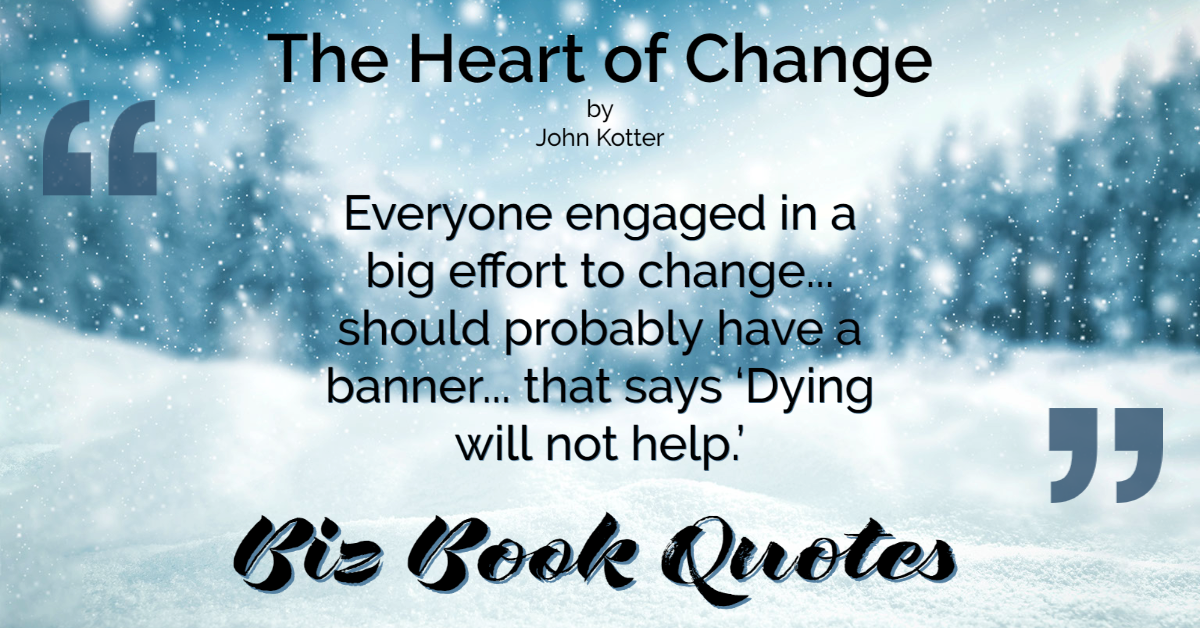 |
Everyone engaged in a big effort to change… should probably have a banner… that says ‘Dying will not help.’
|
155 |
 |
Successful change is more fragile than we often think, or wish to think.
|
162 |
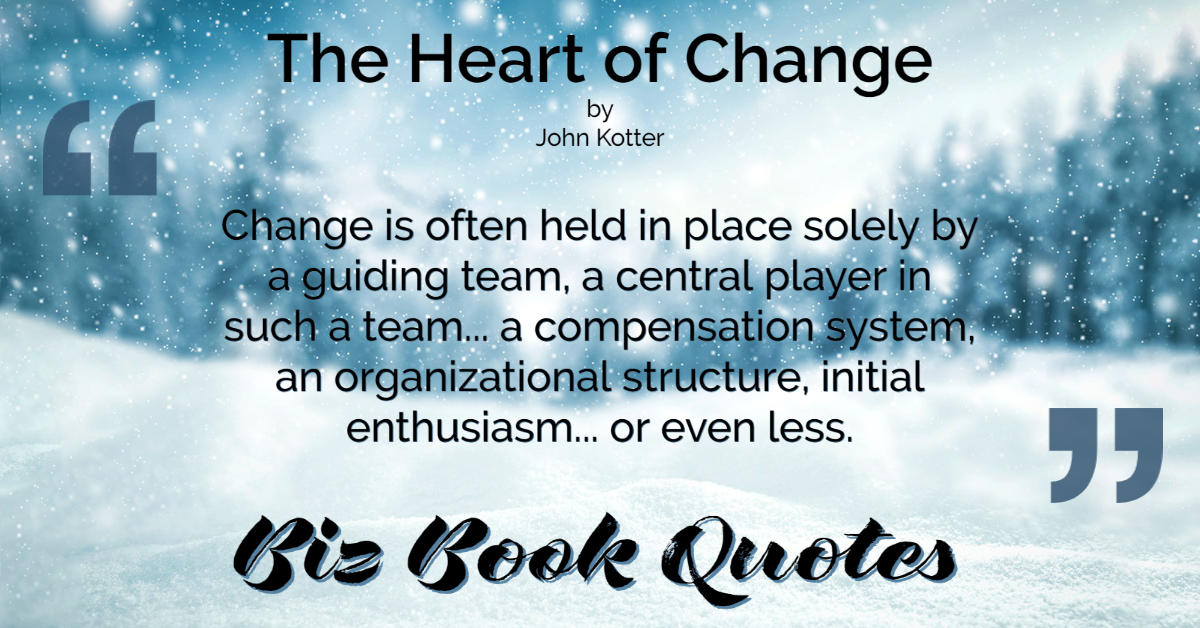 |
Change is often held in place solely by a guiding team, a central player in such a team… a compensation system, an organizational structure, initial enthusiasm… or even less.
|
164 |
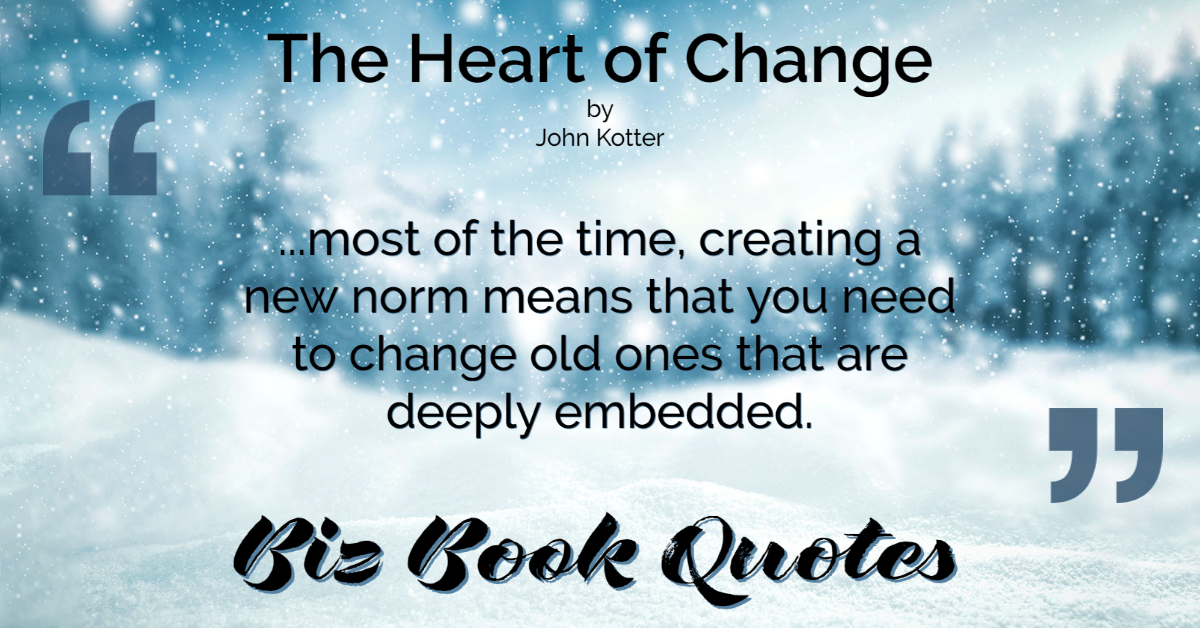 |
…most of the time, creating a new norm means that you need to change old ones that are deeply embedded.
|
165 |
 |
In a change effort, culture comes last, not first.
|
175 |
 |
A culture truly changes only when a new way of operating has been shown to succeed over some minimum period of time.
|
176 |
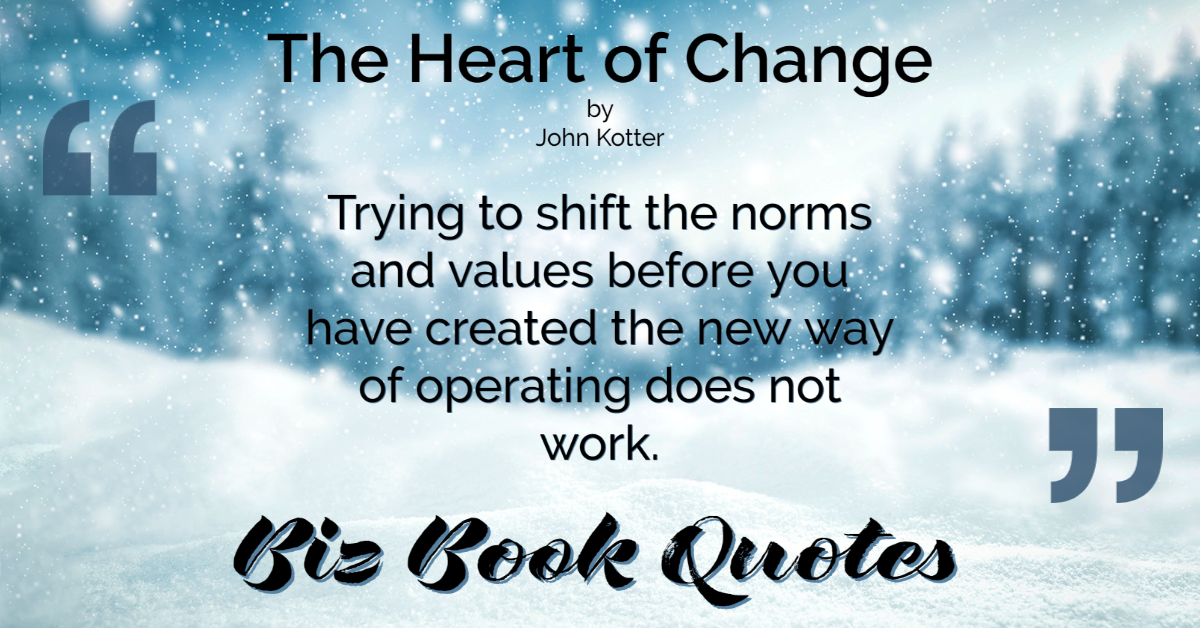 |
Trying to shift the norms and values before you have created the new way of operating does not work.
|
176 |
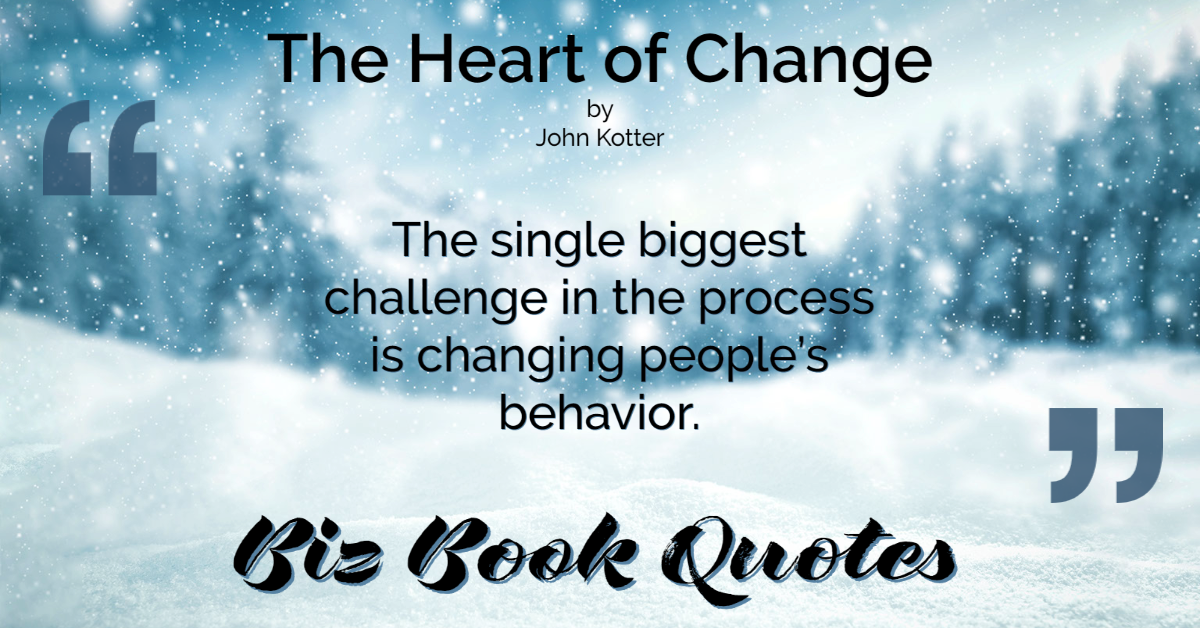 |
The single biggest challenge in the process is changing people’s behavior.
|
179 |
 |
The emotions that undermine change include anger, false pride, pessimism, arrogance, cynicism, panic, exhaustion, insecurity, and anxiety.
|
180 |
 |
In a turbulent world, the requirement for change is ongoing.
|
183 |